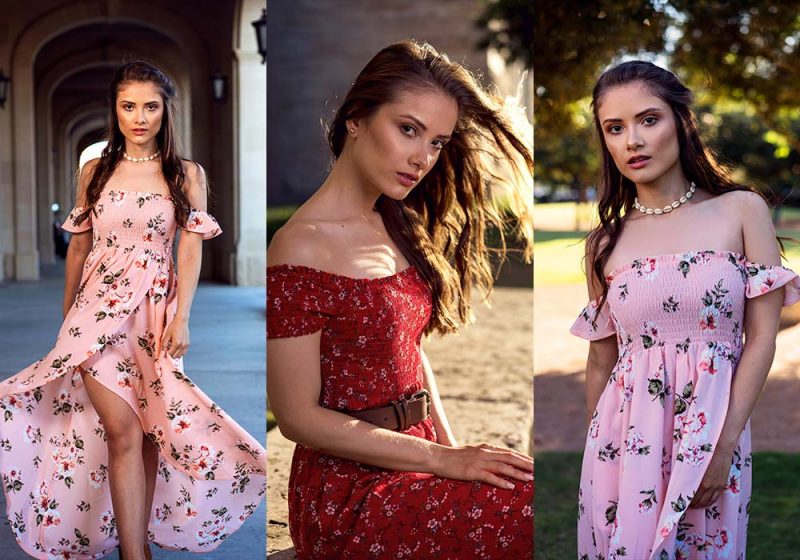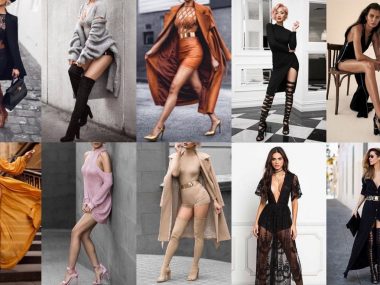When working with new models I don’t always have to direct them on posing. When working with friends and family, there is a chance you’ll need to help out a bit on the posing side.
Sometimes they’ll need a little help getting certain looks and they’ll look to you for help or inspiration.
I’ve done hundreds of model test shoots with models from all experience levels and these are some of the tips and take aways from these sessions.
Posing tips for beginner portrait photographers
The key to posing is communication. Give your model a feeling or emotion to think about. In the end you’re telling a story and you want to showcase this emotion thru your photos.
Think about your model as an actors and you’re the director getting them into character. Take your time, over communicate and you will get your best shot.
3 styles of posing for beginners
I consider model posing in 3 certain ways. These pretty much cover the gamut of portrait shoots and model test shoots that I do on a weekly basis.
- Stop motion posing
- Flow posing
- Lifestyle Posing
Let’s discuss each of these posing styles more in depth and see how I apply them to portrait shoots.
1. Stop Motion Posing
Many photographers will start with this style of posing. It requires your models to get into a single position and hold the pose while you take multiple shots.
This style of posing makes it easy for portrait photographers to move around a subject to get different angles as your subject will not be moving. Consider this style like still life as your model will not be moving much.
When looking at this style of posing, make sure you communicate with your model about staying still. There will be very minimal movement and they will be waiting for your direction before they move to the next pose.
Don’t leave them in a pose too long as this makes it easy to get tired really fast.
2. Flow Posing
I refer to flow posing when I need a model to be in constant motion. This works great models that have high energy and you want very fluid shots. When shooting this style make sure our shutter speed is fast enough to keep up with your models.
I start with a shutter speed of around 1/250 sec or higher when shooting models that are flow posing. They will not stop moving until I tell them to hold a certain pose or recreate a certain movement.
This type of posing is great for models that like to move and work their bodies into different angles.
3. Lifestyle Movement Posing
Just like flow posing, the only difference is having the model interact with a specific location or props in a scene. Think of this just like acting and you’re constantly capturing the action. This works best on location or in fast-moving areas.
If your outdoors, have your models move around small areas and interact with buildings or walls. They can lean against fences or poles and can have fun interacting with the environment.
If you’re at a coffee shop have your models sitting down and taking a drink of their favorite beverage. This style gives more context to your story and shot.
Model Posing Tips
Here are some small tips I share with my models on-site when doing portrait shoots. Now, don’t be shy. It’s ok to show your models examples by posing certain ways yourself.
Exaggerated Poses
I love doing more fashions style shots, and I’m learning to get the models out of their comfort zone. Many new models will not know much about posing in general, but I like to give them this tip. When thinking about your posing, think about exaggerated body movements.
- Standing on your tippy-toes to make you look taller
- Stretching forwards or backward to elongate the torso
- Bending arms inward to convey emotion and strength
- Stretching arms outwards to showcase length
- Moving the body from left to right and always displaying the “S” curve of the body
- Never stand straight towards the camera. Always have your body at an angle
Body contrast
I love body contrast. For example, if you have one arm up, then you have the other arm down. Same goes for If one arm is bent, the other is straight in another direction.
If the model is sitting, then one leg is bent and the other is straight. If your weight is along one side, then exaggerate your limbs to compensate for the other side.
It’s all about contrast of shapes and sizes. Think about how you can work to showcase contrast in your portraits.
Just dance posing
I always have music playing at my model test shoots. This is for two reasons. One, so the model doesn’t get bored, and the other so the model can move naturally to the rhythm of a song. It’s always so much easier to flow pose when you have music playing.
Have the model slow down their movements to around half speed and compensate for the movement with slightly faster shutter speeds.
Acting and emotion
When the session calls for it, one of my tips to my models is to convey an emotion or act out a specific theme.
For example, if you’re doing a moody or sad theme, this will be way different posing versus a happy or excited emotion.
Helping the model understand your concept with words or emotions can help make the posing easier to do.
Walking Poses
One last posing tip is to have the model or subject moving around or walking slow. Keep the model in motion and have them walk towards you or away.
Consider moving with your model so you can get more lifestyle or action shots for your portfolio.
Sitting poses
This one can be a tricky one even when it calls for something as easy as sitting down. Many models will hunch over and create layers to their torso or mid-section when sitting.
Be sure to have your models sitting up straight to help avoid this issue. Bring the shoulders back and have the models at an angle for the best results.
Think about angles
When posing models or working around them, don’t forget about angles. Get into a higher or lower perspective from your subject to get more dynamic shots.
Shooting from above gives you a different feeling from shooting at ground level. Experiment with these perspectives to give your portraits some extra character.
What to do with the hands
This is a funny issue that comes up but people never know what to do with their hands. Some simple suggestions would be to place them in a natural position at the sides.
Don’t let your models separate their fingers. Keep them together.
If the model is moving the hands around, think about how a ballerina moves their hands around. Soft touches and always in elegant form.
I never show the inside of the hands, and prefer to have the outsides of the hands always face the camera.
Communication is key to posing
At the end of the day, your level of communication to your model will help get you better results. Being able to put your ideas into clear directions will help the model express your ideas more clearly in his or her posing.
Sometimes it can be best to take a few mins and talk between sets to make sure the team is on the same page.
Gathering inspiration – Pinterest and Instagram
Before we jump into posing, I would highly recommend you do some research first.
Analyze some of your favorite shots on Instagram, and keep a collection of some of the best poses you want to have your model try out.
Now, I don’t recommend just copying all the poses you see on Instagram or Pinterest, but use these are a way to inspire your subject.
Start a mood-board on Pinterest and do a search for “model posing” to get some good posing tips. Also consider searches that have nothing to do with posing specifically for inspiration.
Maybe check out dancing or fashion design. You would be surprised by the ideas you will find.
Conclusion
Practice, practice and practice some more. The more you practice posing in front of a mirror or in the shower, the better you will get at showing others what you have in mind.
These model posing tips can apply to all types of shoots. No matter what your concept, just be sure to do your homework and be ready for collaboration!
[wptb id=3129]


